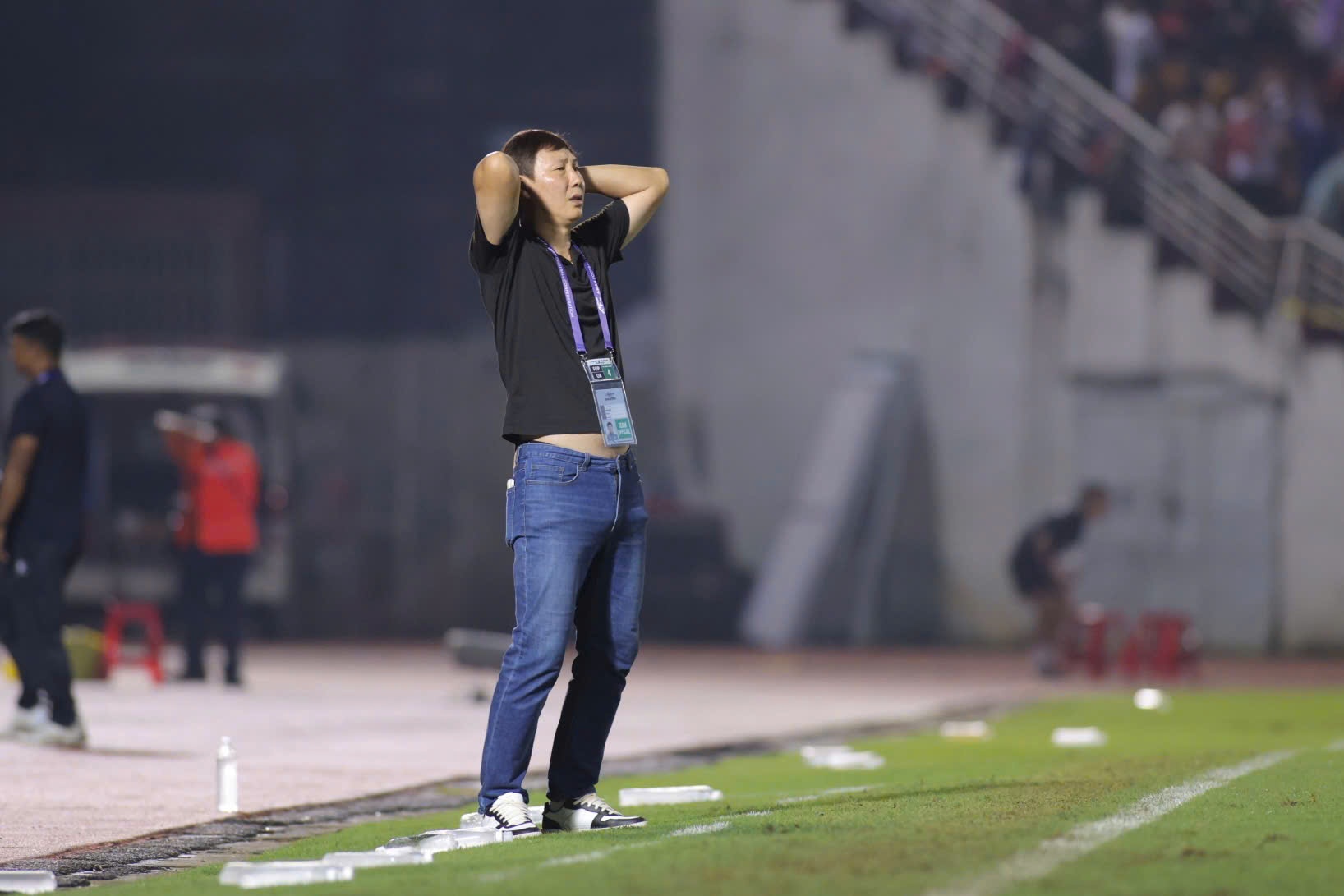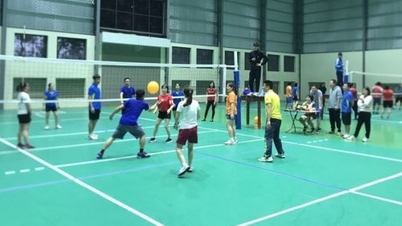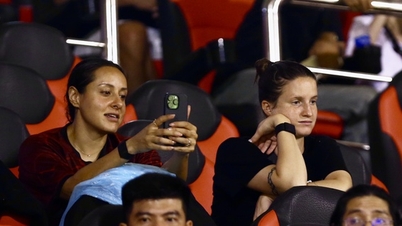 |
Vietnam team had a hard-fought 1-0 victory over Nepal. Photo: Anh Tien . |
At Thong Nhat Stadium (HCMC) on the evening of October 14, the white-shirted team (Vietnam national team) played like in a dream: controlling, pressing, shooting continuously... but were powerless to penetrate the net of an opponent weaker in both stature and class. The ball rolled for less than 5 minutes, Vietnam led 1-0 - not thanks to a smooth coordination or an exemplary shot, but because of a "self-destruct" move by a Nepalese player.
The ripples after victory
An own goal might have made many people think that it would be the start of a rain of goals. But in the end, the rain only came from... sighs.
After that own goal, Vietnam completely controlled the match: controlling the ball, organizing multi-directional attacks, creating nearly 20 shots - of which 11 were on target. The number is enough to show a one-sided game, but also exposes the poorness of the attacking system.
When the opponent cannot fight back (Nepal did not have a single shot on target), the only thing left to judge a team is how they score goals. And in that aspect, Kim Sang-sik's team completely failed.
 |
Tien Linh tries his best against Nepal. Photo: Anh Tien . |
It is easy to blame bad luck. Indeed, in 90 minutes, the ball hit the crossbar and the post three times after shots from Tien Linh, Thanh Nhan and Dinh Bac. But if we only cite bad luck, we will miss the core problem: Vietnam is lacking an effective and organized attacking system.
At times, the attacks were confined to the flanks, the crosses were predictable, and individual efforts - like Van Vy's - were meaningless against Nepal's compact defense. When the goal did not come, the rhythm of Vietnam's attacks became more chaotic, the coordination was impatient and the finishing was hasty. It felt like each player was trying to "rescue" the deadlock with their own efforts, instead of finding the necessary connection between their feet and their heads.
Tien Linh is still the one who runs hard, Van Vy is enthusiastic, Hai Long is energetic, but each piece of the puzzle does not create a clear picture. Nearly 20 shots but not a single goal scored by a Vietnamese player, that is not just a dry number - but a warning.
Mr. Kim is helpless
In the technical area, coach Kim Sang-sik was no longer as calm as usual. He was once praised for his ability to read the game, “play while studying the opponent”, and often made reasonable adjustments in the second half. But on the night of October 14, all his plans were ineffective.
 |
Coach Kim Sang-sik seems to have run out of ideas. Photo: Anh Tien . |
The renewed attacking trio - with Van Vy and Thanh Nhan supporting Tien Linh - did not make a difference compared to the first leg victory. When the game was deadlocked, familiar substitutions like Dinh Bac or Hai Long only helped the team maintain pressure, but did not bring any real solutions for goals. It felt like Mr. Kim was gradually falling into a tactical rut - the most dangerous thing for a coach in the stage of building a foundation for the team.
Nepal’s own goal kept all three points. But this “half-laughing, half-crying” victory cannot hide the fact that Vietnam is having serious problems in organizing attacks. When they cannot score against an opponent who only knows how to huddle and clear the ball, how can they dream of facing teams with much better defensive organization and physical strength?
Coach Kim Sang-sik can take solace in the fact that the goal of victory was still achieved. But he knows better than anyone that this kind of victory is a wake-up call. His team could not make a difference despite completely controlling the game.
A great team does not just need 3 points, but also needs to win them proactively, with identity and belief. If lessons cannot be learned from those “90 minutes of helplessness”, then Nepal’s own goal – an unexpected gift from fate – could be a mirror reflecting the stagnation that Vietnam needs to break, before it is too late.
Source: https://znews.vn/khi-ca-thay-lan-tro-ong-kim-sang-sik-bat-luc-post1593812.html







































































![[Photo] General Secretary To Lam chairs the meeting of the Central Steering Committee on science, technology development, innovation and digital transformation](https://vphoto.vietnam.vn/thumb/402x226/vietnam/resource/IMAGE/2025/10/15/1760500443782_anh-man-hinh-2025-10-15-luc-10-52-47.png)































Comment (0)